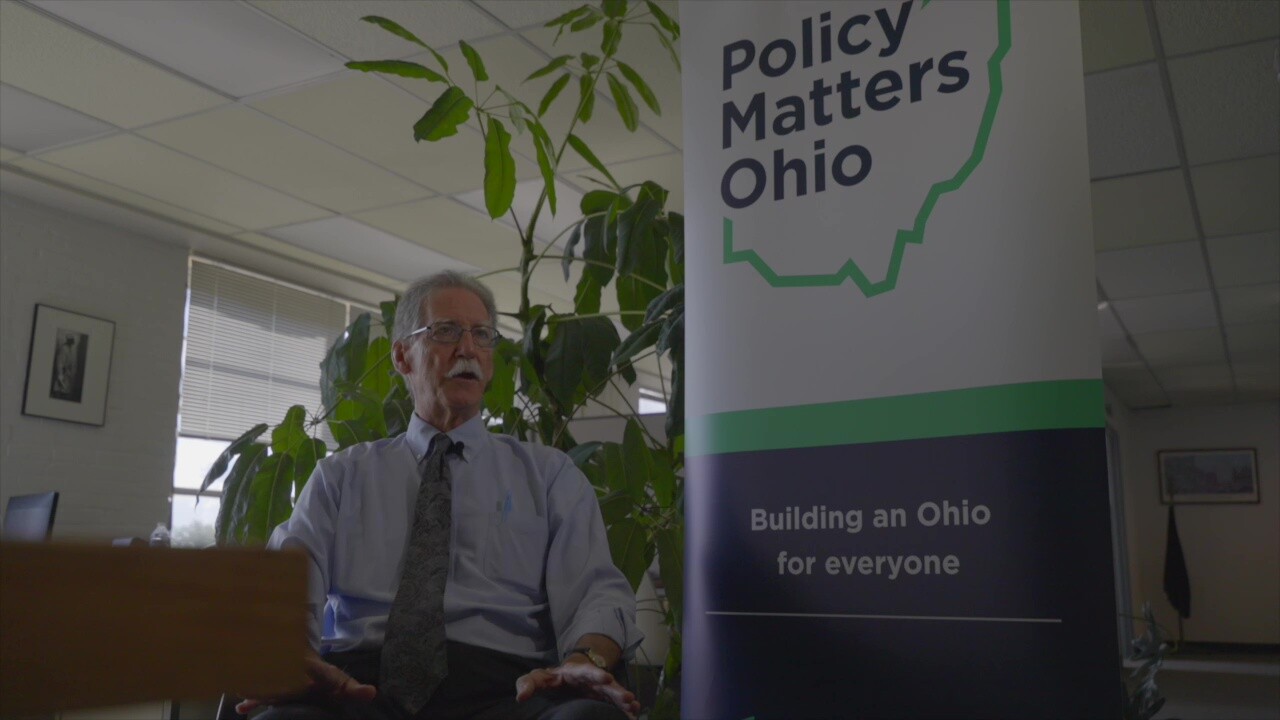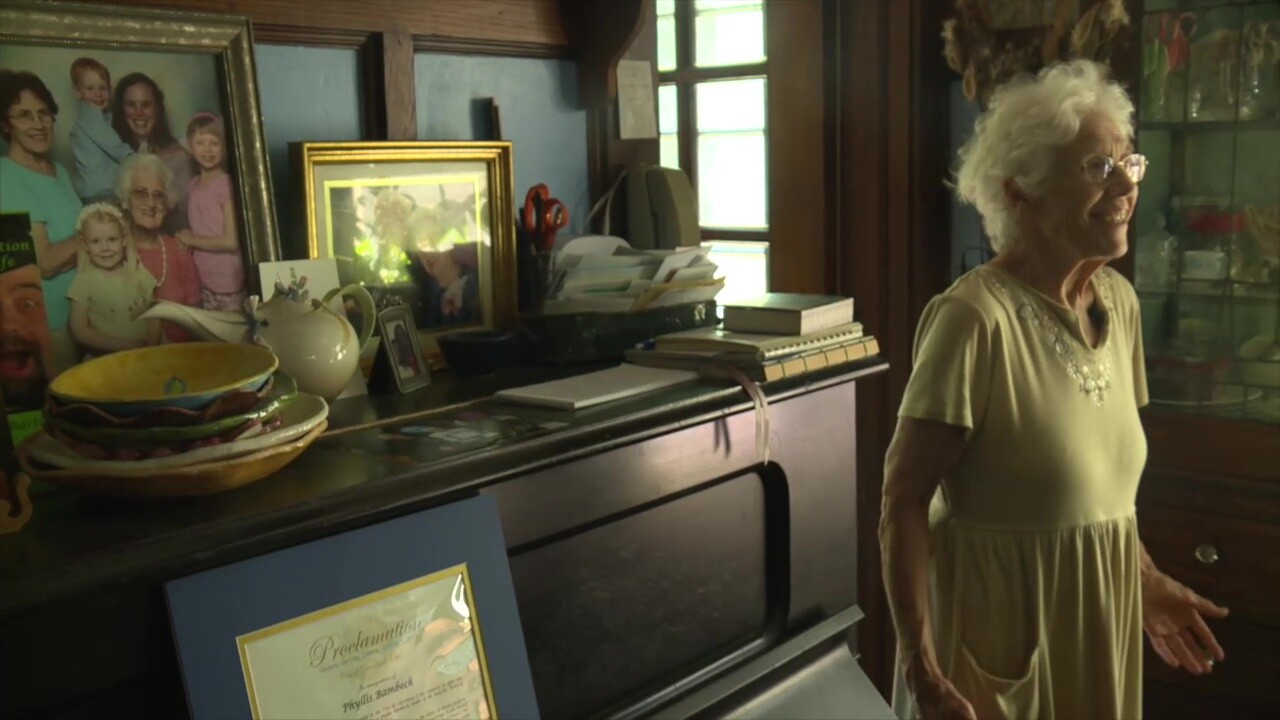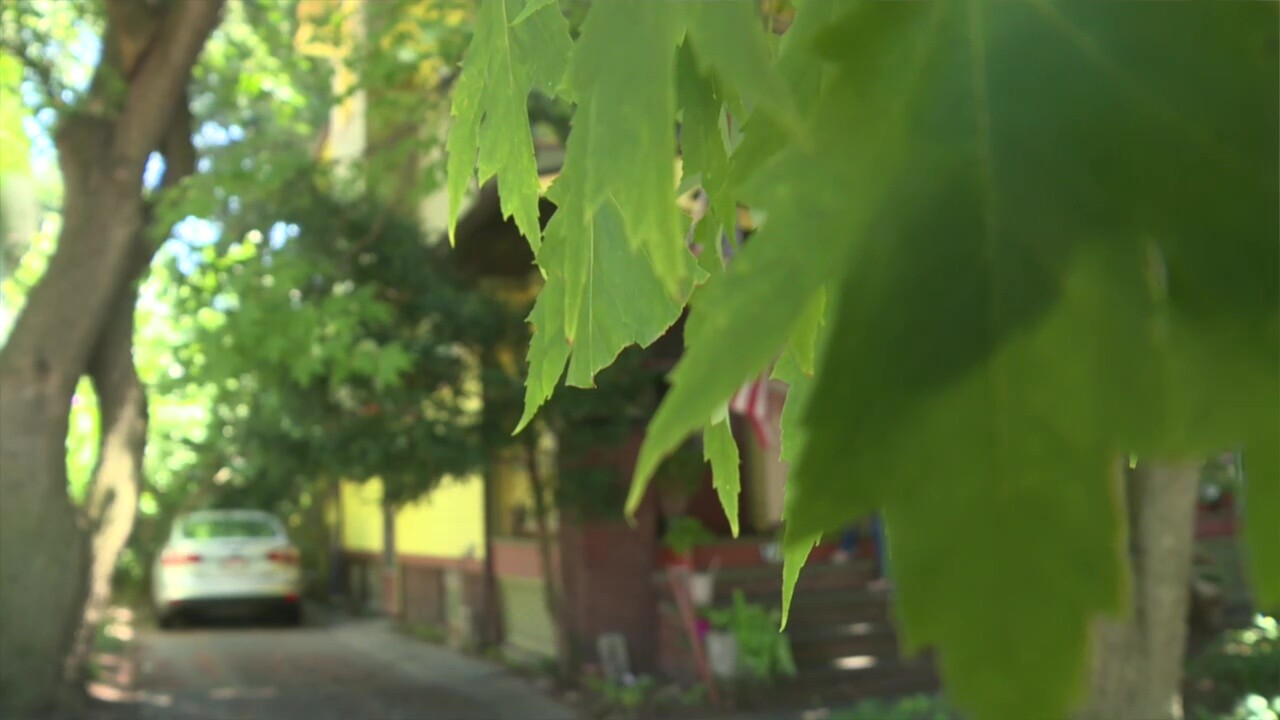CLEVELAND — In June, 84-year-old Phyllis Bambeck walked up to a podium in the Ohio Statehouse.
“Ohioans like me need help,” the retired Cleveland schoolteacher told a committee of state senators. “We have been – and are – responsible homeowners.”
Bambeck’s property tax bill has quadrupled over the last decade as investors have flocked to the Detroit Shoreway neighborhood on the city’s West Side. Now, she’s facing yet another tax hike as Cuyahoga County adjusts home values following a mass reappraisal.
“I do not know what I will do if my taxes go up so much that I can no longer afford to stay in the home that I have lived in and raised my family in for the last 50 years,” she said.
“It’s old and wrinkly like me,” Bambeck added. “But I love it.”
The General Assembly has the power to intervene – to blunt the impact of soaring home values on property taxes. Pending bills in the House and Senate would offer relief to vulnerable homeowners and, in at least one case, renters. But that legislation is sitting.
“They can figure out how to fix it,” Bambeck said. “They don’t want to pay to fix it.”

Cuyahoga County Executive Chris Ronayne and House Democrats from Northeast Ohio are planning a news conference Tuesday to urge lawmakers to act.
They’re responding to an outcry from homeowners who recently received letters about their new valuations – values pushed up by bidding wars and soaring prices in a market where there simply aren’t enough available houses to meet buyers’ demands.
RELATED: Cuyahoga County home values soar in first sweeping reappraisal since the pandemic
That surge is happening across the state, from bustling city neighborhoods to sleepy suburbs to rural communities in Appalachia.
“Sales during the pandemic really juiced the market. We are all experiencing that now,” said Edward Stockhausen, senior vice president of advocacy and external relations at Cleveland Neighborhood Progress, a nonprofit group that’s been lobbying for tax relief.
“It’s a topic you can’t escape at the Statehouse, in city halls,” he said.
Legislators on both sides of the aisle acknowledge that something must be done to prevent taxpayers like Bambeck from being priced out of their longtime homes.
But they can’t seem to agree on a solution – or find a way through political strife.
“It’s heartbreaking,” Sen. Louis “Bill” Blessing said of the stories from constituents.
Blessing, a Cincinnati-area Republican, leads the committee that Bambeck spoke to earlier this year. He’s also one of the sponsors of tax relief legislation and part of a small group of senators who have been digging into the state’s housing challenges.
“Things are being done,” he said. “It’s just, any government level moves slower than people obviously would like.”
Here’s a look at some of the proposals the legislature is considering:

A circuit breaker
Senate Bill 271 and House Bill 645 would create a property-tax circuit breaker. That’s an assistance program that kicks in when property taxes eat up too much of your income.
“Much like an electrical circuit breaker, the idea is that it reduces the load,” said Zach Schiller, the research director for Policy Matters Ohio, a left-leaning think tank.
The proposal would apply to certain homeowners who are spending more than 5% of their income on property taxes. It also would help cash-strapped renters, who indirectly pay property taxes as part of their monthly rent.
Participants would receive a refundable income tax credit or rebate of up to $1,000.
The program would be limited to low-income households – earning up to $60,000 a year at the outset. People living in higher-priced homes or paying high-end rents would not be eligible to participate.
“This is already the case in many states – Missouri, Oklahoma – that are not liberal bastions,” said Schiller, who has been lobbying for this approach.
In fact, most states offer some sort of circuit breaker, according to the Institute on Taxation and Economic Policy, a nonprofit, nonpartisan research organization.
“It isn’t a silver bullet that will end the issue,” Schiller said. “But I think it will provide significant relief.”
This is one of the approaches Blessing favors, too.
But it would require the state to foot the bill, at an estimated cost of more than $800 million a year. That’s about 0.84% of the state’s biennial budget.
“This is not an extraordinary sum that we simply can’t come up with,” Schiller argued.

Residential stability zones
Another proposal, Senate Bill 244, would give local governments the power to cap tax increases for low-income homeowners.
Townships, counties and cities would create so-called “residential stability zones” – areas where homeowners would be able to apply for tax relief. Participating homeowners would not get tax cuts. But they could see their tax bills hold steady – or rise more slowly.
That means cities and other local taxing entities wouldn’t lose money. But they’d be giving up some gains to prevent homeowners like Bambeck from being pushed out.
And the state wouldn’t have to pick up the tab.
The proposal is modeled on Ohio’s existing tax abatement policy, which allows local governments to forgo new property-tax revenues created by development.
“This is a state issue,” Stockhausen said. “Right now, municipalities and counties don’t have any mechanisms to deal with this issue.”
His employer, Cleveland Neighborhood Progress, is leading the push for Senate Bill 244.
The nonprofit is focused on revitalizing city neighborhoods, from housing to business districts. But it can be tough to sell residents on those investments when so many longtime homeowners worry that any new development will drive their taxes up.
“They’ve been our neighbors for decades,” Stockhausen said. “Without a tool to help them, they’re going to be forced to … sell their home and move. They could be forced into tax foreclosure. And any money that they would be investing in the maintenance and repair of their home, they’re not able to. Especially in these hot real estate markets.”
But this isn’t just a challenge in the city. The highest concentrations of low-income homeowners are in rural areas, particularly in southeast Ohio, Stockhausen said.
He and his coworkers believe there are about 990,000 low-income, owner-occupied households across the state, based on their analysis of Census data. It’s far too early to say how many of those households might be eligible for help through residential stability zones, since communities could set limits by age or how long someone has lived in a home.
Stockhausen and Schiller disagree on the most viable form of tax relief for Ohio.
But in separate interviews, they both stressed one thing.
“It really matters that our state reps and state senators hear from you. And it matters that your mayors and city council members also hear from you,” Stockhausen said.
“That’s what causes change,” Schiller said. “People getting together and saying ‘We can’t deal with this. We’ve gotta do something about it.’”

Homestead expansion
Legislators are also talking about expanding the homestead exemption, an existing tax break available to low-income elderly homeowners and disabled individuals.
That exemption is modest today. It eliminates tax payments on the first $26,200 of a home’s value. And it’s limited to low-income households – making up to $38,600 this year.
The legislature recently tweaked the program so that the exemption amount will rise with inflation. But home values have been climbing at a much swifter pace.
House Bill 187 would increase the exemption and temporarily double the program’s income cap to $75,000. Very low-income households would get the full tax break. Higher-income households would receive a partial benefit.
The legislation has gone through a series of changes, passing from the House to the Senate and back. But it has been stalled in the House since late 2023.
The state pays for the homestead exemption. More than 728,000 homeowners took advantage of it for the 2022 tax year, costing the state $331.6 million.
The average tax cut was $455, according to the Ohio Department of Taxation.
Cuyahoga County is, by far, the heaviest user of the program, according to the state’s data.

Other proposals
Other possible fixes include property tax freezes or deferrals.
Deferral programs let elderly homeowners put off paying part or all of their property taxes until they sell their homes, move out or die. Then someone – the homeowner or their estate, for example – has to pay the bill, plus interest.
Blessing believes Ohio needs a combination of tools: A circuit breaker, the broader homestead expansion and a tax-deferral program.
“Those are three key pieces of legislation that, I think, really ultimately take care of this problem in the short-term,” he said. “The long-term issue is housing, obviously – to get that in order and stop the rampant increase in real estate inflation.”
Other lawmakers have suggested amending the state’s constitution to limit annual property tax increases to 4% a year. But that proposal would require a public vote. It didn’t make it onto the November ballot.
Since early 2023, members of the General Assembly have introduced more than a dozen bills that touch on the topic of property tax relief.
Advocates don’t expect any of those bills to win passage this year, between political infighting and the upcoming election. But they hope lawmakers will include one or more tax-relief measures in the next budget bill, which must be approved by late June.
“Maybe I’ll be surprised, and that would be great,” Schiller said.
Stockhausen is encouraged by the amount of chatter he hears – and the fact that so many groups, from county auditors to AARP Ohio, are urging legislators to do something.
“When I started working on this issue, very few people were paying attention,” he said. “Very few elected officials were paying attention and really wanted to know the details. ... Everyone’s interested now. Everyone wants to see a solution. And I’m actually very optimistic.”

'Why am I being penalized?'
Bambeck has watched some of her neighbors move out as housing costs soar.
Her street, not far from the Gordon Square Arts District, is home to a mix of renters and owners – a diverse community she doesn’t want to lose.
“I love this neighborhood,” she said. “I love this street. I love the people who live on this street. I know that I can go to anyone on this street if I need help – and get it.”
Her neighborhood is growing, with half-million-dollar townhouses just a few blocks away. But her home hasn’t changed much since she bought it a half-century ago.
Her garage is a chicken coop. Her yard is a wilderness of plants. Inside, she recently refinished the hardwood floors herself, with a stain she made from black walnuts.
“I could have moved out years ago. But I didn’t. I chose to stay here,” she said. “Why am I being penalized for staying here and being one of the old-timers?”
The proposed value of her house rose by $84,700 in the county’s recent reappraisal. Bambeck’s annual tax bill could rise by $1,322 a year, according to a calculator posted on the county’s fiscal office website. And that’s before a school levy on the November ballot.
She filed an informal appeal to reduce that new valuation. If she doesn’t succeed, she’ll take her battle to the Cuyahoga County Board of Revision next year. And, if necessary, to the Ohio Board of Tax Appeals.
It’s a process Bambeck has been through before. And if the state doesn’t act, it’s one she’ll probably have to go through again.
After all, she says, she could live to be 100.
“I want them to carry me out of here feet-first,” she said.
RELATED: 'Columbus, we have a problem': Northeast Ohio leaders say we need a property tax fix




